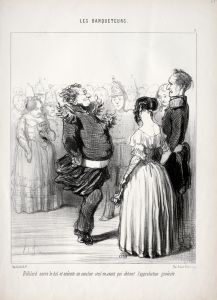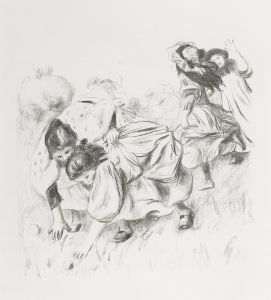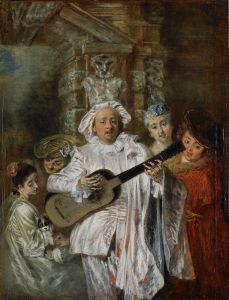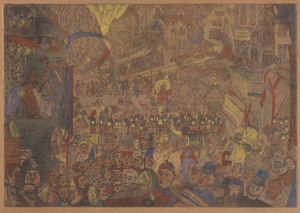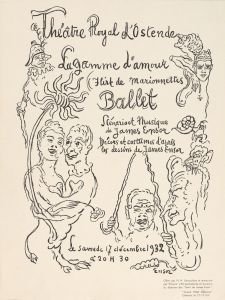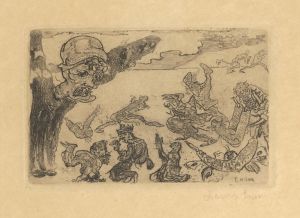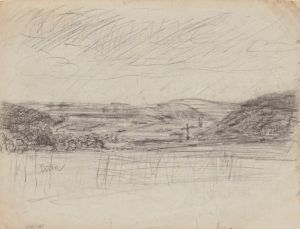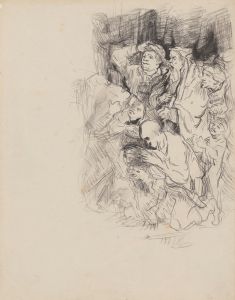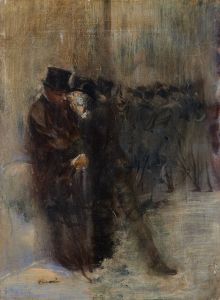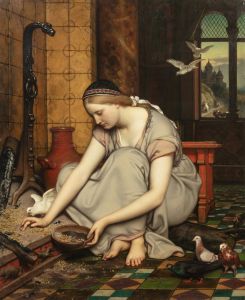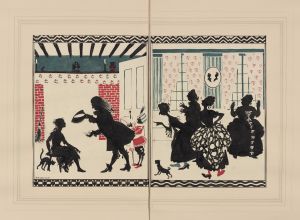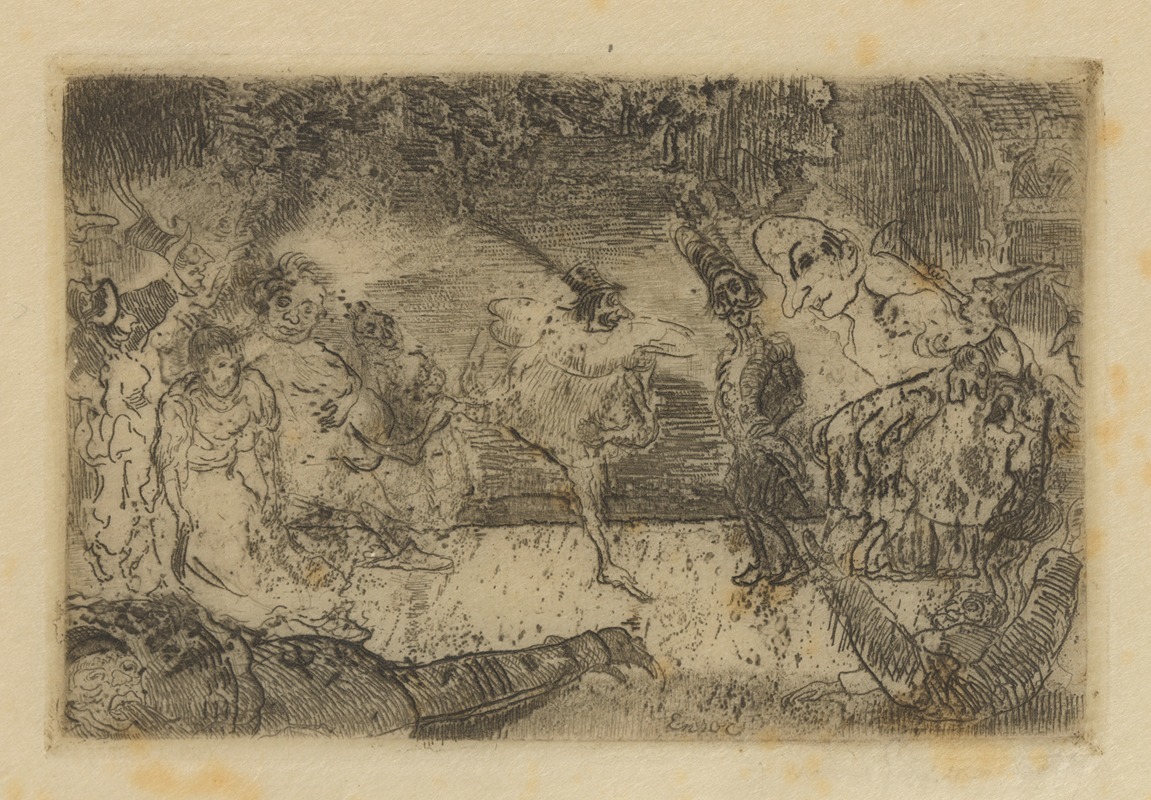
Het fantastische bal
A hand-painted replica of James Ensor’s masterpiece Het fantastische bal, meticulously crafted by professional artists to capture the true essence of the original. Each piece is created with museum-quality canvas and rare mineral pigments, carefully painted by experienced artists with delicate brushstrokes and rich, layered colors to perfectly recreate the texture of the original artwork. Unlike machine-printed reproductions, this hand-painted version brings the painting to life, infused with the artist’s emotions and skill in every stroke. Whether for personal collection or home decoration, it instantly elevates the artistic atmosphere of any space.
James Ensor's painting "Het fantastische bal" (The Fantastic Ball) is a notable work by the Belgian artist, who is renowned for his unique style and imaginative compositions. Ensor, born in 1860 in Ostend, Belgium, was a pivotal figure in the transition from 19th-century realism to 20th-century expressionism and surrealism. His work often features fantastical elements, grotesque figures, and a vivid use of color, reflecting his interest in themes of absurdity, satire, and the macabre.
"Het fantastische bal" exemplifies Ensor's fascination with masks and carnivals, recurring motifs in his oeuvre. These elements allowed him to explore the duality of human nature and the hidden aspects of identity. The painting depicts a vibrant and chaotic scene, filled with masked figures engaged in a lively dance or celebration. The masks, often exaggerated and grotesque, serve as a metaphor for the facades people wear in society, concealing their true selves.
Ensor's use of color in "Het fantastische bal" is particularly striking. He employs a bright and varied palette, which enhances the sense of festivity and chaos. The dynamic composition and swirling forms create a sense of movement, drawing the viewer into the scene. This approach reflects Ensor's departure from traditional artistic conventions and his embrace of a more expressive and avant-garde style.
The painting also reflects Ensor's critical view of society. Through the depiction of masked revelers, he comments on the superficiality and hypocrisy he perceived in the social customs of his time. This critical stance is a hallmark of Ensor's work, as he often used his art to challenge societal norms and provoke thought.
Ensor's interest in masks and carnivals can be traced back to his upbringing in Ostend, a coastal city known for its vibrant cultural life and annual carnival celebrations. These experiences left a lasting impression on Ensor and heavily influenced his artistic vision. The carnival, with its blend of the real and the fantastical, provided a rich source of inspiration for his exploration of human behavior and societal critique.
"Het fantastische bal" is part of Ensor's broader body of work that includes paintings, drawings, and prints. His innovative approach and distinctive style have earned him a significant place in art history, influencing later movements such as expressionism and surrealism. Ensor's ability to blend humor, satire, and a keen observation of human nature continues to resonate with audiences today.
In summary, "Het fantastische bal" is a quintessential example of James Ensor's artistic vision. Through its vibrant colors, dynamic composition, and symbolic use of masks, the painting captures the essence of Ensor's critique of society and his fascination with the complexities of human identity. As a work of art, it stands as a testament to Ensor's innovative spirit and his enduring impact on the world of art.






